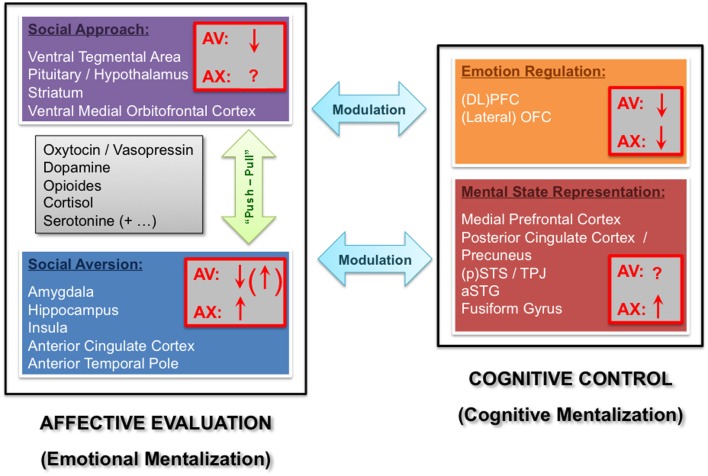Figure 1.
Functional neuroanatomical model of the influence of adult attachment style on social processing. Two core component networks mediate relatively automatic affective evaluations versus more controlled cognitive processes, broadly corresponding to emotional versus cognitive mentalization mechanisms proposed in other models (Fonagy and Luyten, 2009). The affective evaluation component further comprises social approach (purple) versus aversion (blue) systems, whereas the cognitive control component comprises distinct systems implicated in emotion regulation (orange) and mental state representation (red). We assume “push-pull” effects between approach versus aversion modules (green arrow), which might be jointly influenced by learning as well as genetic factors (e.g., neuromodulator systems listed in the gray box). In addition, more complex reciprocal influence may exist between the affective evaluation and cognitive control components (turquoise arrows). The possible influence of attachment avoidance (AV) or anxiety (AX) on activity of each of these networks is depicted by (downward or upward) arrows (red boxes) representing relative hypo- or hyper-activation, respectively. For details, please refer to text. (DL)PFC = (dorsolateral) prefrontal cortex; OFC = orbitofrontal cortex; (p)STS = (posterior) superior temporal sulcus; TPJ = temporo-parietal junction; aSTG = anterior superior temporal gyrus.

